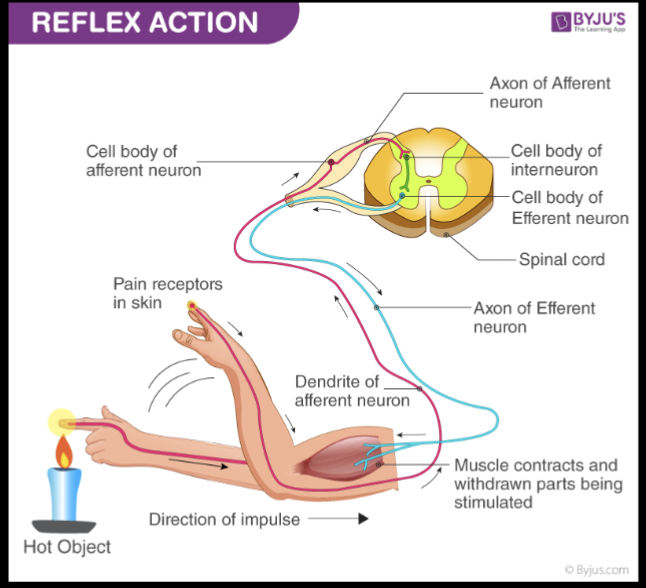Localization of function in the brain
1/28
Earn XP
Description and Tags
Week 3 Sep. 17th
Name | Mastery | Learn | Test | Matching | Spaced |
|---|
No study sessions yet.
29 Terms
What was Phrenology and what was he right and wrong about?
(Franz Gall, 1819)
Different bumps on the skull reveal our mental abilities and character traits
Wrong about:
Bumps
traits
Right about:
LOCALIZATION (that’s why we still talk about him)
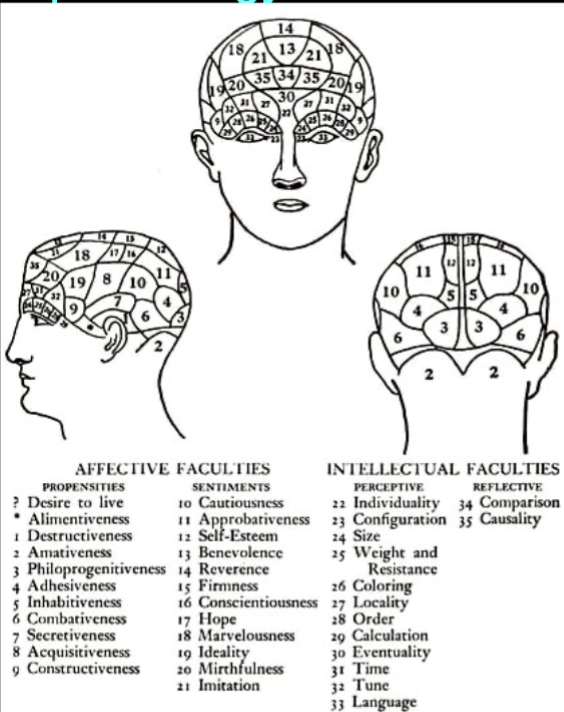
What was the popular pseudoscience of the 19th century?
Phrenology
Skull measures
This data was used as a scientific basis for racism and colonialism
What is brain localization?
Brain location and functioning is oversimplification
Note that it’s *useful* oversimplification
as is most of science, really
Most of the processing that’s now thought to occur in certain areas really does occur there, in normal cases
just not all of it, and not in al cases
Modern “Phrenology”
A combination of ideas!
The brain as a whole is active during any task, but there are areas of peak activity which suggests a single region involves in a particular task

Brain Organization
Frontal lobe…. in the front
Parietal lobe… in the top-back
Temporal lobe… in the sides
Occipital lobe… in the back
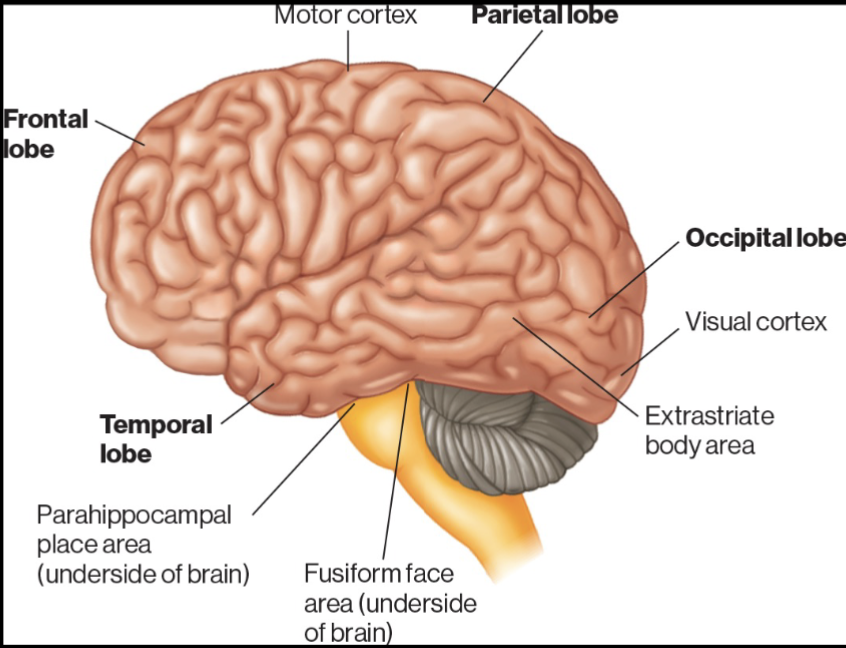
Embryological development
The vertebrate nervous stem forms out of a simple tube with three lumps
The midbrain and hindbrain become the brainstem
The forebrain becomes the cerebral cortex and other higher structures
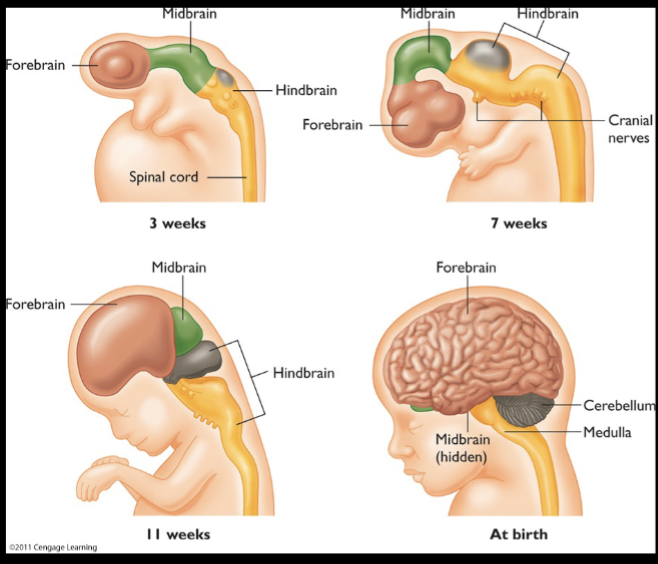
Brain Organization
Top: Luxuries
Bottom: Necessities
Voluntary action, complex judgment symbolic thought
Emotion, motivation, simple judgement
Sensory information
Basic motor programs
Basic life functions (breathing, heartbeat)
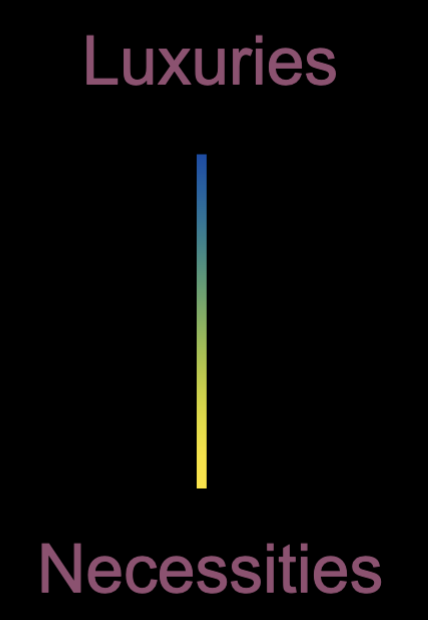
What actions happen in the cerebral cortex?
Voluntary action
Complex judgement
Symbolic thought

What actions happen in the limbic system?
Emotion
Motivation
Simple judgement

What information is processed in the thalaums?
Sensory information, sensory relay station!!!

What type of basic motor program occurs in the cerebellum?
Repetitive movement, etc.
(the cerebellum is the butt of the brain, think twerking… repetitive movement in the butt of the brain)
What basic life functions happens in the brain stem?
Breathing, heartbeat
Brainstem equals?
Survival
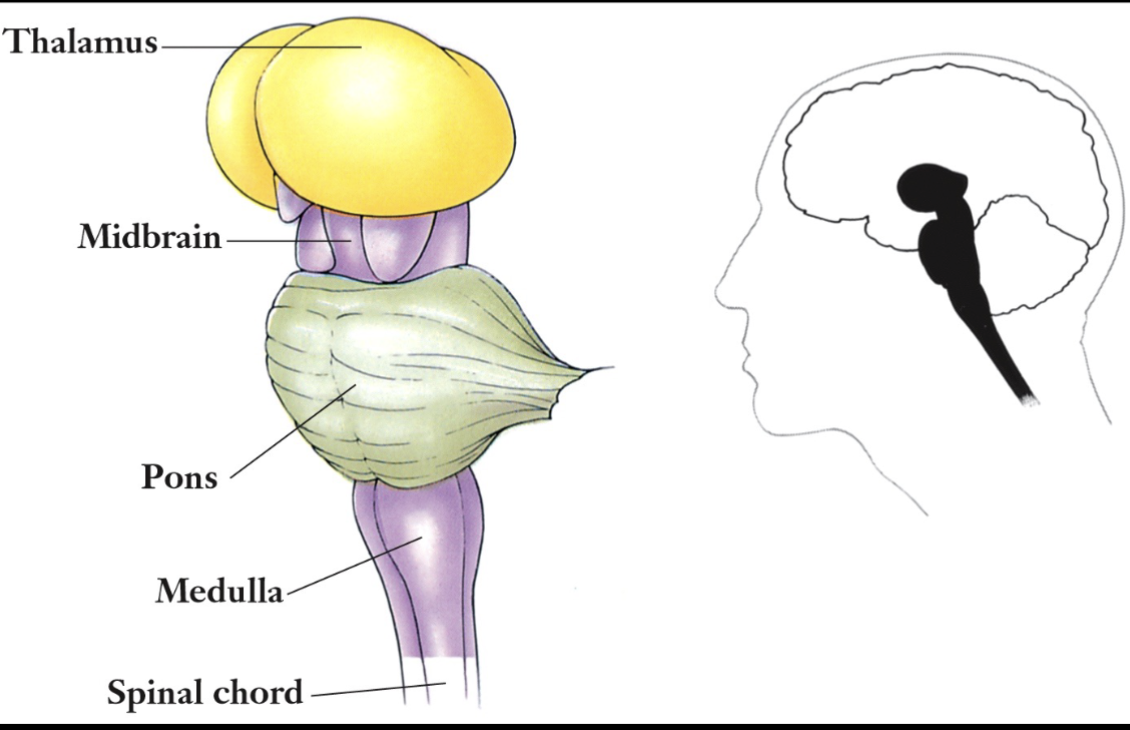
Cerebellum equals?
Movement
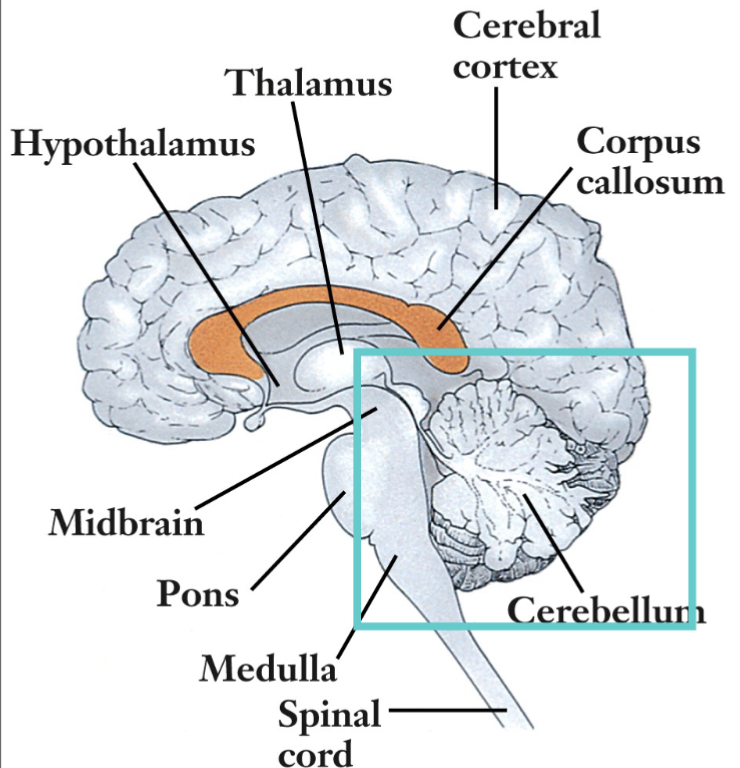
Cerebellum
Integrates visual, auditory, somatosensory information
Modifies the motor outflow
exerting a coordinating and smoothing effect on the movement
Cerebellar damage results in jerky, poorly coordinated, exaggerated movements
extensive cerebellar damage makes it impossible even to stand
Forebrain
Thalamus
located above the hypothalamus
receives information from the cerebral cortex
projects information to specific regions of it
Sensory hub
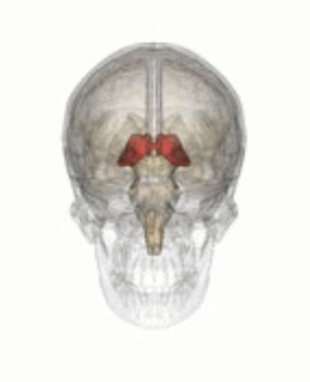
Limbic system - Emotions
Hypothalamus
regulates emotional and motivated behavior
Amygdala
an almond-shaped structure crucial for emotional processing
deep inside the temporal lobes
Hippocampus
vital for memory processing
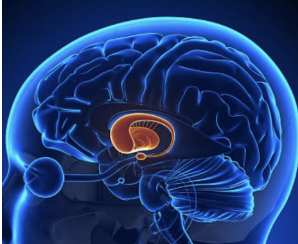
Forebrain
Cerebral cortex
the outer covering of the forebrain
it’s composed of gray matter
the cell bodies of the cortical neurons
Interior of the forebrain is composed of white matter or axons of cortical neurons
is it white because of its myelin coating
Left vs Right Brain
Left side:
Control of the right side of the body
Written and spoken language
Mathematical calculations
Logical decision making
Reasoning
Right side:
Control left side of the body
Understanding language
Non-literal thinking
Spatial awareness
Imagination
Facial Recognition
Contralateral Organization
Most of the sensory and motor information that travels to and from the brain goes to the opposite side of the body
Motor crossover
right hemisphere controls left side
left hemisphere controls right side
Visual Crossover
Left visual field to right hemisphere
Right visual field to left hemisphere
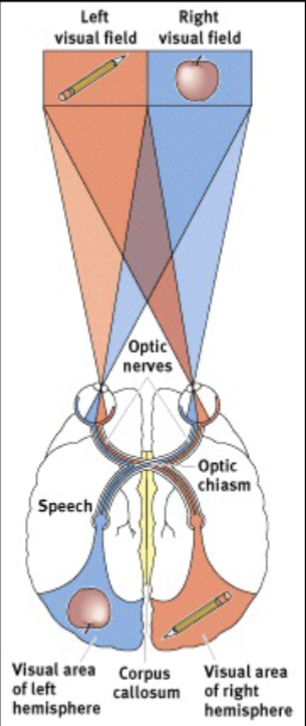
Cerebral cortex regions
Frontal lobe, parietal lobe, occipital lobe, and temporal lobe
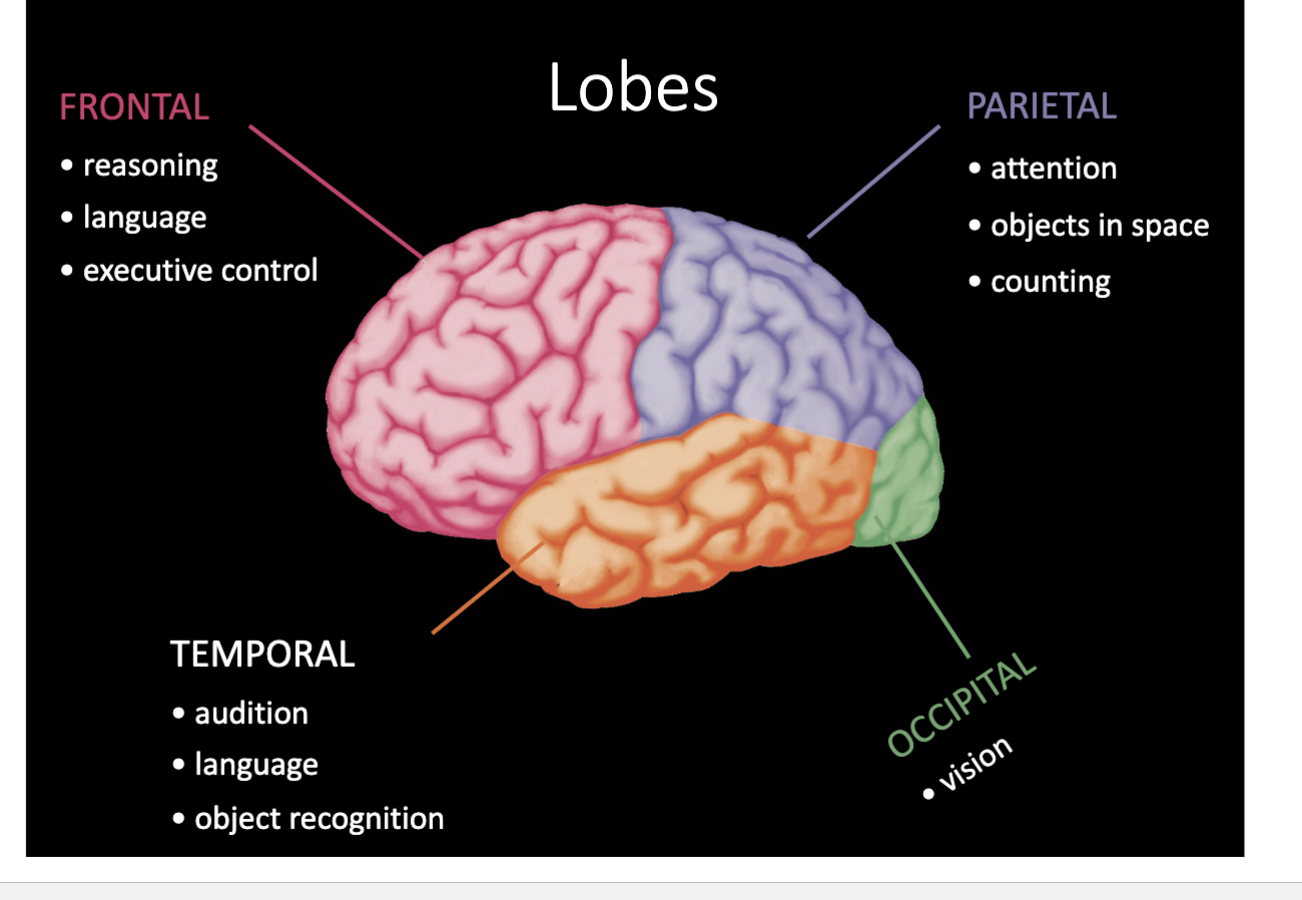
What is the central sulcus?
Central Sulcus
Prominent, deep groove that runs roughly in the middle of the lateral surface of the cerebral hemisphere
Lateral Sulcus
Deep fissure (also called the Sylvian fissure) that separates the temporal lobe from the frontal and parietal lobes
Lobe Division:
Separates the frontal lobe from the parietal lobe, while the lateral sulcus (also known as the Sylvian fissure) separates the frontal and parietal lobes from the temporal lobe below
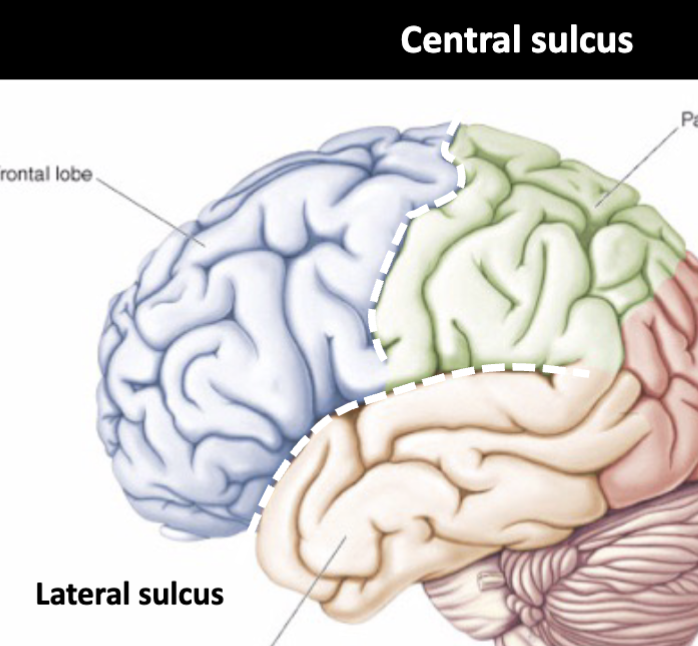
What part of the brain for the four lobes live in?
Forebrain
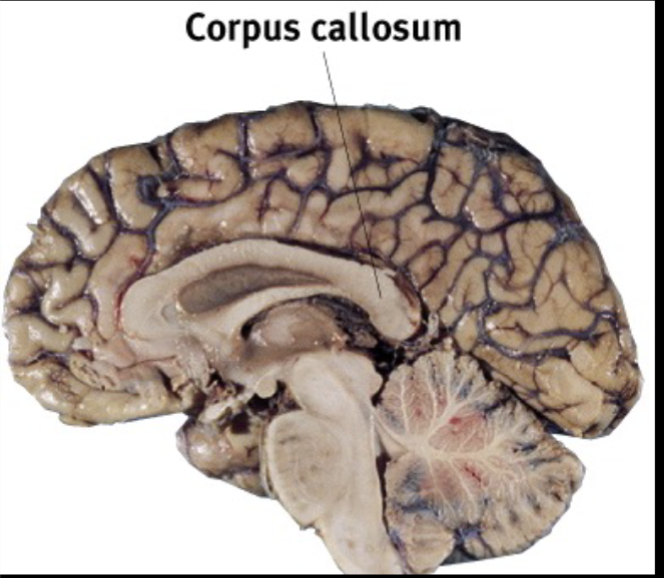
The Corpus Callosum
Large bundle of neural fibers (axons specifically) connecting the two brain hemispheres
The main pathway that links and send communication between the two hemispheres
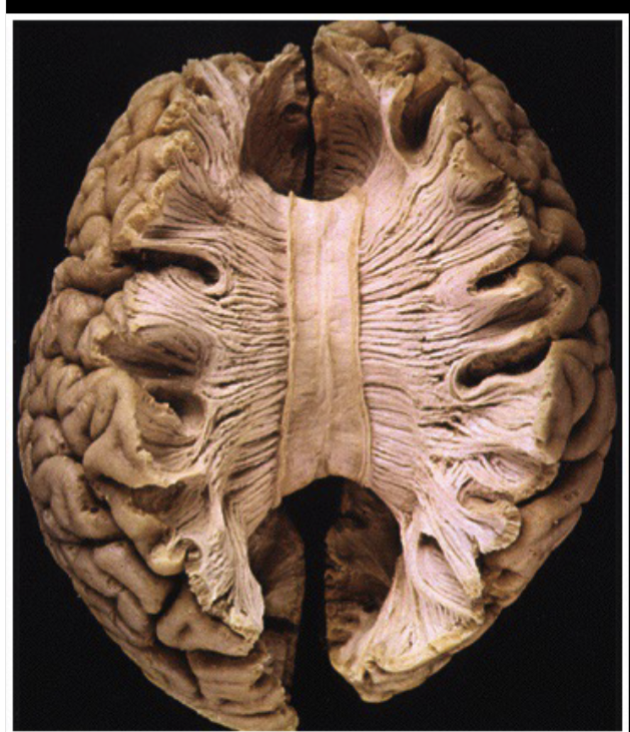
Experience and the Brain
The two halves of the brain
work with individuals who haev the “split-brain” operation (severing the corpus callosum) to control seizures provides evidence that the two hemispheres are highly specialized
The two halves of the brain…
The right hemisphere communicates with the left in order to name the objects in its visual field
the left hemisphere works with the right to synthesize details into a whole picture (e.g. combining the parts of a face into a whole recognizable image)
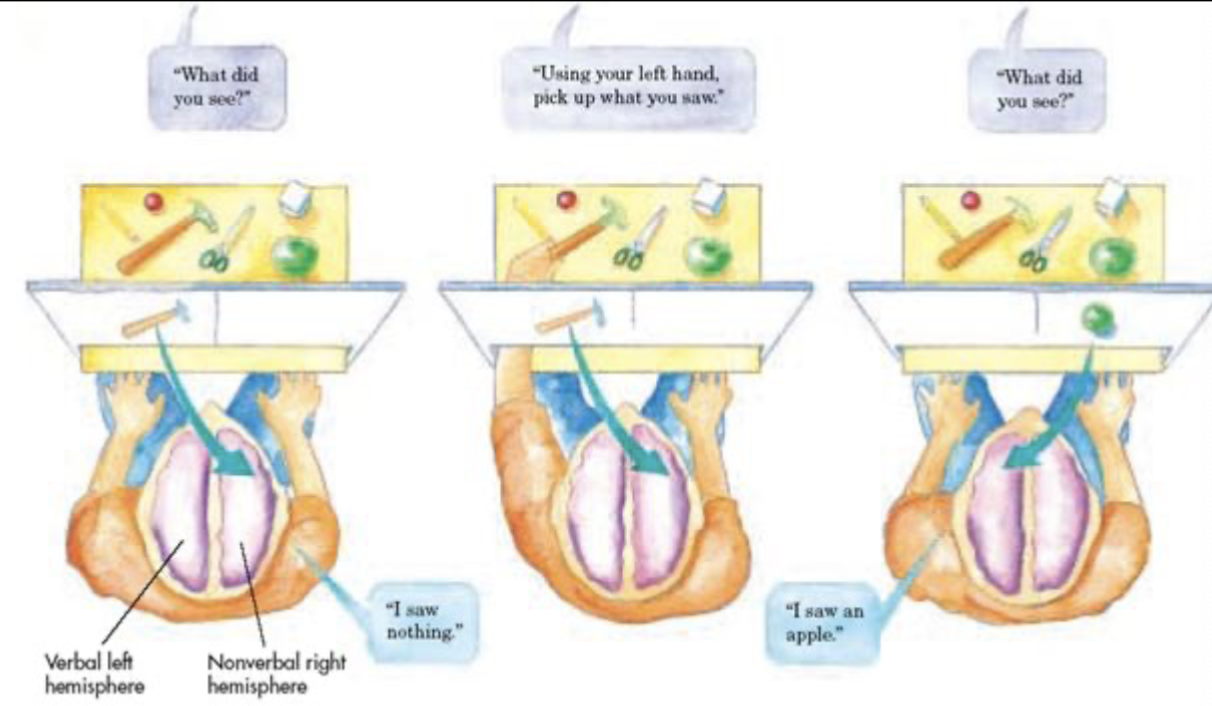
How does the cerebral cortex communicate with the body?
The spinal cord!!!
reflex and voluntary responses
Lets talk spinal cord…
A reflex is a rapid, automatic response to a stimulus
usually originate in the spinal cord
Voluntary responses originate in the brain and travel via the spinal cord to the muscles to carry out movements
Reflex in the spinal cord
Stimulant triggers MUSCLE CONTRACTION and withdraws parts being stimulated
Dendrite of AFFERENT NEURONS receives stimuli then transports electrical signals (stimuli becomes electrical signals) down toward its cell body then to axon
The electrical signals travel along the axon to the CNS, reaches the synapse and triggers release of neurotransmitters
Passed to cell body of efferent neuron, down its axon to, inhibiting or exciting postsynaptic neuron
